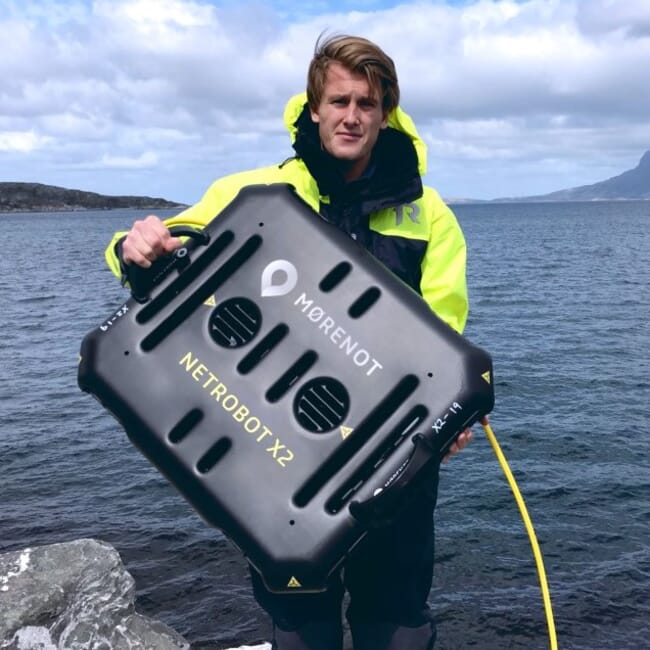The NetRobot X2, designed by Mørenot, is designed to be put on a clean net to ensure it never develops biofouling – thus improving fish welfare by improving oxygen flows and removing the need for periodic cleaning – the detritus from which can irritate the gills of the fish.

“We see that the flushing [blasting the biofilm off nets] is bad for the environment because of greenhouse gases as well as diesel use - and that it also stresses the fish. Frequent replacement of the net is a great expense that increases the risk of escape. It is better to have an automated contraption that runs on the net wall and keeps it clean,” says Yngve Askeland, development manager at the Bodø-based firm.
The invention is also an alternative to the use of copper-based anti-foulants.
“Today, copper and other heavy metals are used in net impregnation to slow down [algal] growth. The industry now wants to reduce this, and continuous brushing of the net wall is an environment-friendly alternative,” says Askeland.
The device is reminiscent of domestic robotic vacuum cleaners but does not need to be recharged and has electric thrusters that ensure proper pressure onto the net wall. A large cage is usually divided into four zones, where the robot can manoeuvre up and down along the entire net wall.
“In the course of a day, it usually manages to brush a zone 10-12 times. The fish likes it very much. The robot is fully electric and noise-free and is operated via a cable that plugs into the power supply on side of the cage,” says Askeland.
“The cable also makes it possible to transfer data. Via a modem in coupling box on the cage, we can adjust settings from the control room, log operating time and upgrade software as needed,” he adds.
Askeland says that the development of the NetRobot X2 has taken a long time. The main challenge has been to make the robot go smoothly and remain stable against the net wall.
“It has performed well in test tanks with trips of up to 20 km. In cages, however, there are other challenges with water currents and wave movements. Getting the thruster setup to work in a stable way has been the key to success,” he adds.
There are currently 22 robots operating at farms for long-term testing. The plan is to develop an operation centre that has control over the follow-up of the equipment that is in operation.
“NetRobot X2 is not a pure ‘quick fix’. The user must have a conscious strategy about how to use the product in order for it to be a success on an equal footing with other established technology in our industry. We will have a close dialogue and follow-up with customers who are using it - and expand service and support functions along the way.
Askeland says that Mørenot, which is exhibiting at Stand A-101 at Aqua Nor, is proud to be nominated for the award.
“The Innovation Award is highly regarded in the supplier industry because it shows that something has been done that deserves to be noticed. It is a very competent jury who assesses the candidates, and we are honoured to be nominated,” he says.



